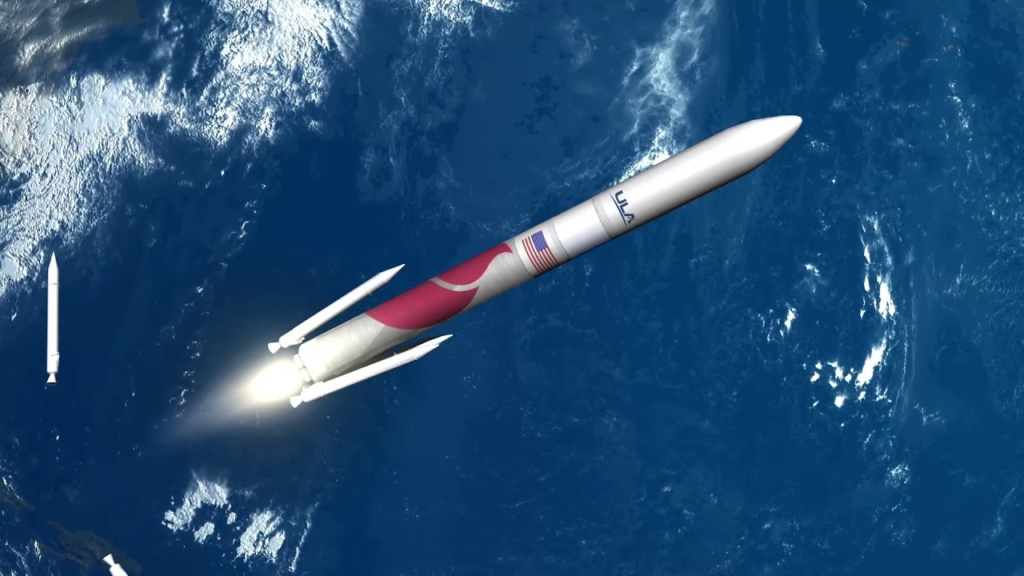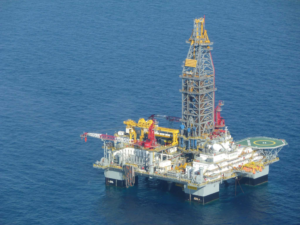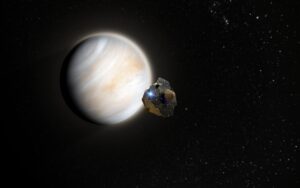
An Update On Vulcan & Its Maiden Flight
With 2023 only days away, we are closer than ever to the first launch of United Launch Alliances’s Vulcan Centaur. While the last couple of weeks have been quiet on ULA’s end, we have learned more about the payload and when we can expect it to be delivered and integrated. A substantial step that will dictate when this launch vehicle lifts off for the first time.
Specifically, just days ago Astrobotic and the Perigrine payload was unwrapped in the clean room for final software testing. Once complete, it will be sent to the cape and integrated with Vulcan ahead of launch. As of right now, the launch is still scheduled to happen in the first quarter of 2023. This means we are only months away assuming all the final testing goes according to plan.
While this mission endured a lot of delays in the past relating to various issues and complications, now at the final stretch they are trying to stay on track. If successful, this mission will deliver a critical payload to the Moon apart of NASA’s CLPS program, test Vulcan, and verify what the BE-4 engine is capable of. Here I will go more in-depth into the recent updates on this mission, why it’s so important, what to expect in the future, and more.
Recent Updates

For reference, one of the most recent updates from ULA and CEO Tory Bruno came in the middle of November with a tweet saying, “Here’s something to help with your stressful day: #VulcanRocket’s First Flight Centaur V (and Standard Brian). With its pair of astoundingly high performance RL10C engines installed!” Here you could see the upper stage which at the time was close to being ready. By now almost a month and a half later, it should be ready for shipping if not already in the process.
More recently, starting on December 20th, Astrobotic tweeted mentioning, “Peregrine’s electromagnetic testing was completed AHEAD OF SCHEDULE! This means Peregrine (and our team) will be home for the holidays!” This included an image of the payload on the test stand. To be specific, the maiden flight is slated to launch Astrobotic Technology’s Peregrine lunar lander for NASA’s Commercial Lunar Payload Services (CLPS) program and Kuiper Systems’ Kuipersat-1 and Kuipersat-2. NASA program to contract transportation services able to send small robotic landers and rovers to the Moon’s south polar region mostly with the goals of scouting for lunar resources, testing in situ resource utilization (ISRU) concepts, and performing lunar science to support the Artemis lunar program. The completion of these test ahead of schedule only helps ensure that payload integration will be complete on time if not early.
In addition, only days ago on the 26th, Astrobotic retweeted highlighting, “Best. Present. Ever. Team @astrobotic has unwrapped the Peregrine spacecraft inside the Clean Room, kicking off a week of closeout tasks & final software testing before beginning the final leg of its journey to @NASAKennedy in the new year!” This officially marks the final testing that should yield promising results and an efficient delivery.
In Vulcan’s case, right now we are waiting for confirmation of delivery to the Cape. Back in October, ULA expected to ship the completed vehicle to the launch site in November. Being that it’s almost January and there has been no confirmation yet, it’s possible some slight delays are holding back the launch vehicle. Either way, once Vulcan arrives at the launch complex, it will undergo a final series of tests to verify its readiness for flight consisting of multiple tanking tests and a wet dress rehearsal, culminating in flight readiness firing, which will be the final step prior to launch. Following the successful final testing, Astrobotic and the other payloads will be installed on the launch vehicle.
While these extra small delays are slightly concerning, United Launch Alliance is likely taking its time and trying to ensure that this launch is a success. The maiden flights of rockets are by no means easy and often end with an explosion. A fate that ULA and every other company involved in this mission are trying to avoid.
Vulcan & Mission Overview

Now that we know more about Vulcan’s slight delays, and the payload’s whereabouts, we can take a closer look at the launch vehicle itself and the goal of this mission. This commercial mission is part of ULA’s requirement to meet the U.S. Space Force certification of its new launch vehicle. Mark Peller, vice president of Major Development, stated “We are committed to ensuring we fly the first certification mission and stay on schedule to achieve U.S. Space Force certification of Vulcan in advance of our first national security space mission in 4th quarter 2023.” “This has been an incredible journey to get to this point and I am so proud of the development team,” said Bruno. “We look forward to the first flight as Vulcan offers all customers higher performance and greater affordability while continuing to deliver our unmatched reliability.”
Leveraging a legacy of 100 percent mission success launching more than 150 missions to explore, ULA is trying to withhold the history being one of the nation’s most experienced and reliable launch service providers with world-leading reliability, schedule confidence, and mission optimization. Vulcan’s maiden flight and its future all will impact what ULA is trying to achieve.
Just over a week ago on the 20th, we learned even more about the payload and its progress. Specifically, Astrobotic announced that their Peregrine lunar lander had completed electromagnetic interference (EMI/EMC) testing early and will arrive back at their headquarters on December 23. Originally, Peregrine was to spend the next week at a facility in Bohemia, New York to complete residual integration activities and prepare for thermal vacuum chamber (TVAC) testing. Because the test campaign is ahead of schedule, Peregrine will be brought back to Pittsburgh to give employees an opportunity to be home for the holidays.
”I commend the test teams who worked tirelessly to identify opportunities for an efficient campaign. Peregrine’s journey back to Pittsburgh also gives the public an opportunity to see the Peregrine spacecraft one last time before it continues on to TVAC testing, then to Florida for a Q1 2023 launch,” says Sharad Bhaskaran, Mission Director for Peregrine Mission One. EMI/EMC testing checked the electromagnetic compatibility between the Peregrine lander and United Launch Alliance’s Vulcan Centaur rocket. The radiated emissions tests proved that Peregrine does not emit electromagnetic energy harmful to the Vulcan rocket, while radiated susceptibility ensured Peregrine can operate properly after being subjected to electromagnetic energy emitted by Vulcan. Finally, “Self Compatibility” testing confirms the spacecraft will function nominally during standard flight operations.
”As Peregrine’s first EMI/EMC test campaign, passing against all reviewed test criteria is a major company accomplishment. It really exhibits the skill, experience, and determination of our engineers and technicians,” said Yoonhee Steadman, Lead Spacecraft Electrical Integration and Test Engineer at Astrobotic.
This large payload will fit within Vulcan’s fiarings. The payload fairing (PLF) provides a controlled, safe environment for spacecraft during ascent. All ULA PLFs are configured for off-pad payload encapsulation to enhance payload safety and security and minimize on-pad time. The spacecraft is encapsulated in a 5.4-m- (17.7-ft-) diameter payload fairing (PLF), a sandwich composite structure made with a vented aluminum-honeycomb core and graphite-epoxy face sheets. The bisector (two-piece shell) PLF encapsulates the spacecraft. The payload attach fitting (PAF) is a similar sandwich composite structure creating the mating interface from spacecraft to second stage and payload fairing. The PLF separates using a debris-free horizontal and vertical separation system with spring packs and frangible joint assembly. The payload fairing is available in the 15.5-m (51-ft) standard and 21.3-m (70-ft) long configurations.
ULA highlights that access to orbit remains a critical hurdle for many missions. However, they are confident they provide flexible and cost-effective multi-manifest solutions to overcome this barrier. With multi-manifest, two or more spacecraft are integrated on a launch vehicle using available performance and volume margin that would otherwise go unused — optimizing mass to orbit and enabling missions. Multi-Manifest on a Vulcan rocket provides a highly reliable and schedule certain launch solution for spacecraft ranging from CubeSats to small sats and beyond.
Dependent on the size of the spacecraft, multi-manifesting on a Vulcan can be done in several ways. The Aft Bulkhead Carrier (ABC) interfaces at the aft end of the Centaur upper stage and can carry up to 24U CubeSats weighing 80 kg each. The Secondary Payload Adapter (ESPA Ring) is located between the upper stage and the primary payload and can accommodate 4-6 payload modules weighing up to 318 kg each. A feature that we will see much more of in the coming years.
Conclusion
United Launch Alliance has been very busy recently as some of the final steps are completed prior to Vulcan’s maiden flight. As this launch vehicle is expected to become the company’s new workhorse, a lot is riding on this initial mission. We will have to wait and see how it progresses and the impact it has on the space industry.



